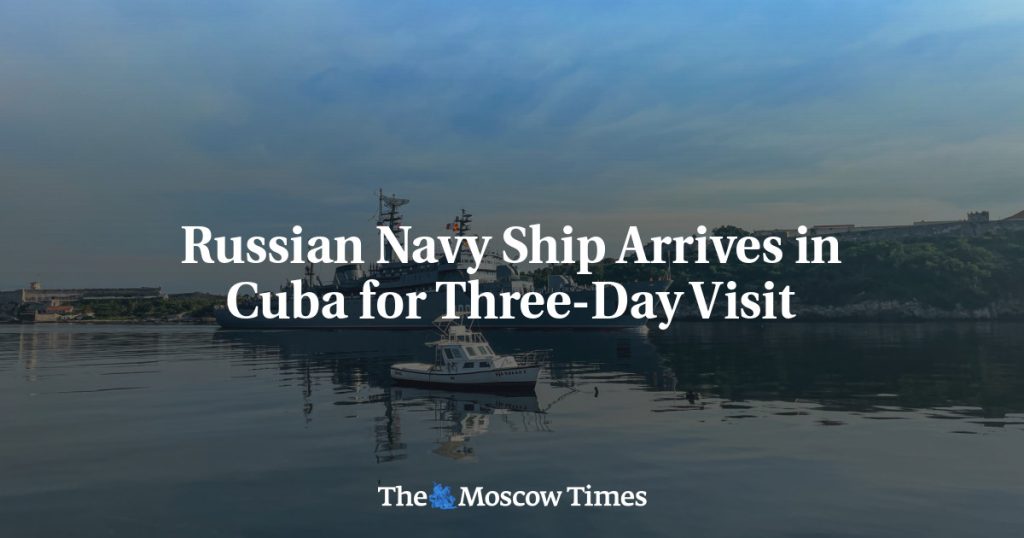A Russian navy ship, the Smolny, arrived in Cuba for a three-day stay, accompanied by two other vessels, as part of a friendly visit to the Cuban capital. The ship was greeted with salvos from Cuban artillery and residents and tourists gathered in Havana’s harbor to catch a glimpse of the vessel. This visit comes six weeks after a Russian submarine and other naval vessels visited the communist state off the coast of Florida. The Russian embassy in Cuba highlighted this visit as an example of the close relations between the Russian and Cuban people.
In mid-June, the Russian nuclear-powered submarine Kazan docked in Havana for five days, although Cuba clarified that the submarine was not carrying nuclear weapons. This deployment of Russian naval vessels so close to US territory occurred amidst major tensions over the war in Ukraine, where the United States-backed government was fighting a Russian invasion. In response to the Russian submarine’s arrival, the United States sent a fast-attack submarine to its Guantanamo Bay base in Cuba. This exchange of naval presence near Cuban waters harked back to the Cold War era, when Cuba was an important client state for the Soviet Union.
During the Cold War, Cuba became a key ally for the Soviet Union, which led to the deployment of Soviet nuclear missile sites on the island. This escalation of the presence of nuclear weapons in Cuba resulted in the Cuban Missile Crisis of 1962, a dramatic episode where the US and the Soviet Union came dangerously close to war. The deployment of Russian naval vessels near Cuban waters in the present day may evoke memories of this tense period in history. The arrival of the Russian navy ship, the Smolny, in Cuba underscores the lingering geopolitical implications of Russia’s historical ties with Cuba.
The recent visit of Russian naval vessels to Cuba represents a continuation of the close relationship between Russia and Cuba, stemming from their shared history during the Cold War era. The presence of Russian naval vessels near US territory signals Russia’s intent to assert its influence in the region, amidst tensions over conflicts such as the war in Ukraine. The deployment of Russian naval vessels near Cuba also serves as a reminder of the historical significance of Cuba as a key player during the Cold War, when it was instrumental in the Cuban Missile Crisis of 1962.
The interaction between Russian and Cuban naval forces near US waters highlights the ongoing rivalry between the US and Russia in global affairs. The deployment of Russian naval vessels near Cuba could be seen as a symbolic gesture of solidarity between Russia and Cuba, as well as a strategic move to challenge US influence in the region. The arrival of the Russian navy ship, the Smolny, in Cuba reflects the complex web of geopolitical tensions and historical legacies that continue to shape relationships between major powers in the present day.
Overall, the visit of Russian naval vessels to Cuba represents a multifaceted display of political, historical, and strategic dynamics between Russia, Cuba, and the United States. The arrival of the Smolny training ship in Havana serves as a visible reminder of Russia’s historical ties to Cuba and its ongoing efforts to project power in the region. The presence of Russian naval vessels near Cuban waters underscores the enduring complexity of international relations and the ways in which historical legacies continue to influence contemporary geopolitical events.


